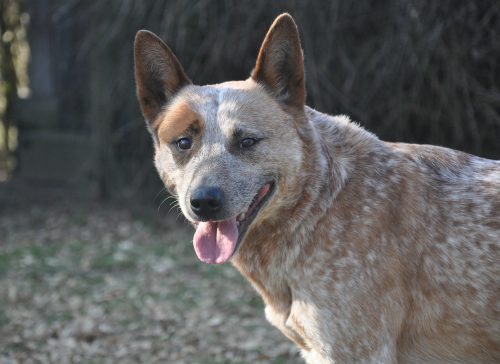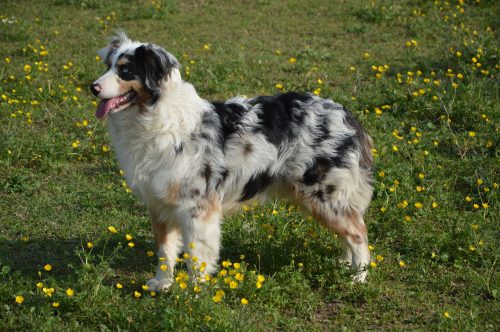A big question that comes to mind when you are considering getting a dog is “what breed of dog is the healthiest?” And while it is a complicated question with no guarantees, there are some breeds that seem to encounter fewer health issues than others.
There is no breed of dog that is the “ultimate healthy dog.” It simply doesn’t exist because genetics don’t work that way. A puppy coming from a lineage with no genetic defects can still suffer from health issues that his ancestors didn’t encounter.
However, it is certainly true that certain breeds are known to have better overall health, and tend to live longer lives, while other breeds have shorter lifespans and are more susceptible to certain health issues. So while it can’t be stressed enough that every dog is different, and even a dog from the healthiest pedigree can still encounter plenty of health issues, here is a list of the healthiest dog breeds, and the relatively minor health issues they may come across.
Mixed Breed or Mutt
This might seem like a puzzling start to the list, but it turns out that mixed breed dogs are less prone to health issues than purebreds. In fact, studies have shown that mutts are less likely to develop conditions like heart disease, musculoskeletal problems, hyperthyroidism, allergies, and other genetic diseases.
There is some thought that each mixed breed dog possesses the strongest physical attributes of his parents, but there is no proof to that theory. Another theory is that mixed breed dogs have a lower level of inbreeding, which often causes health issues. But in the end, it’s all in the individual dog’s DNA.
And while each mixed breed dog is genetically unique, having a healthy mutt that lives a long life is like hitting the genetic lottery — there are no guarantees. One litter of mixed breed dogs can have a bevy of health issues, while another can produce pups that go their whole lives without ever developing a serious health condition.
Breeders would argue against mixed breed dogs, and many breeders do produce long lines of healthy dogs. But there have been countless cases of mixed breed dogs living very long, healthy lives — even longer than their purebred counterparts.
There are potential health risks with any dog, but if you are considering getting a mixed breed dog, your local shelter is the place to find one. When you do, make sure you test them for genetic diseases since you will have no idea as to their family history and want to be prepared for anything that might come up down the road.
Australian Cattle Dog
This energetic dog breed is renowned for its intelligence, agility, and endurance. As a comparatively healthy breed, the Australian Cattle Dog does not have a history of serious illnesses and may live up to 13 years with proper training and appropriate preventative care.
Traditionally used for cattle herding, these popular working dogs are very intelligent, with strong problem-solving skills and a lifespan of around 10 to 13 years. Australian Cattle Dogs are renowned for their smarts, agility, and endurance, and are easy to train. They make excellent companions for high-energy families that are always on-the-go.
Australian Cattle Dogs do not have a history of any life threatening illnesses or defects. The major health concerns Australian Cattle Dogs are susceptible to include hip dysplasia, elbow dysplasia, progressive retinal atrophy (PRA), and deafness. Progressive retinal atrophy is a condition where the dog will slowly lose his eyesight. However, this condition sets in slowly when the dog is around five to eight years old, allowing the dog to adjust to not being able to see.
Hip dysplasia is a condition that any large breed dog may encounter, and can be treated through surgery or joint replacement. And while it may seem harder to train a deaf dog, it is achievable. With proper care and safety procedures, any dog that encounters these conditions can still live a full and happy life, making the Australian Cattle Dog one of the healthiest breeds available.
Australian Shepherd
Another high-energy breed, Australian Shepherds are beloved for their exceptional smarts and skill with agility training, as well as their loving and playful nature. Like the Cattle Dog, the Shepherd is best-suited for an active family that wants a companion for adventures. The Australian Shepherd will not be happy unless he has constant, challenging activity.
Australian Shepherds lack the hereditary issues many breeds are prone to, including bone, skin, and fur problems that often affect other breeds. This breed can live for up to 15 years. Health concerns for Australian Shepherds include hip dysplasia, several different eye conditions, and multiple drug sensitivity.
The eye conditions Aussies may be susceptible to include colobomas (which occur when part of the eye tissue isn’t developed) cataracts, detached retinas, progressive retinal atrophy (PRA), and collie eye anomaly, which can either be mild or blinding.
Because these conditions are fairly common in this breed, Australian Shepherds should have their eyes checked regularly. You can test for these conditions with genetic testing. However, even if your Australian Shepherd does lose his vision, rest assured knowing that he can still live a happy life with a few simple safety precautions.
An odd condition that can sometimes affect Australian Shepherds is Multiple Drug Sensitivity (MDS). This conditions causes the dog to become hypersensitive to ordinary medications that are used in common veterinary practice. Think of it as a drug allergy. Puppies can be screened for this condition as well with a cheek swab; this simple procedure could save your dog’s life.
Border Collie
Another active breed, the Border Collie, eludes many health problems that are seen in other dogs. Border Collies can reach an age of 14 years old, and seem to have unlimited energy and stamina throughout their lifetime. Known for being extremely smart and healthy, the Border Collie is susceptible to a few minor genetic health conditions that are becoming easier to control with advances in testing and treatment.
These health conditions include PRA, osteochondritis dissecans and patent ductus arteriosus, which is a joint disease that usually affects larger dogs. Other conditions may include a weakness of eye ligaments known as lens luxation, collie eye anomaly, hypothyroidism, epilepsy and hip dysplasia.
Collie Eye Anomaly (CEA) is similar to progressive retinal atrophy. When a dog has CEA, his eye does not develop normally, which affects the retina and can lead to a wide range of side effects. There may be no visual impairment, but other cases may result in total blindness, it all depends on the case. Border Collie puppies should be checked for this condition at 12 weeks old.
Hip dysplasia is one of the more common conditions seen in Border Collies, although less so than in larger breeds. Hip dysplasia can be treated and managed for a long time and usually doesn’t set in until later in a dog’s life. Epilepsy is another genetic condition affecting this breed, but is perhaps the least common.
Siberian Husky
Coming from a long line of strong, resilient sled dogs, Siberian Huskies are a hardy, healthy and large dog breed. Known for their past as working dogs, today they are fun and loving pets that are great for both families and adventure-seekers. They are wild puppies, but are very smart, and with proper training will make great companions.
The common health conditions encountered by Siberian Huskies are similar to those of the other breeds listed above, including hip dysplasia, and eye disorders, including PRA and cataracts. Cataracts occurs when the lens ends up cloudy or has specific parts blocked. Unless you notice your dog experiencing discomfort, you usually do not need to undergo surgery; your dog will just adjust to their deteriorating vision. This typically happens later in life, but has been seen in Huskies as young as two years old.
If you are considering adding a Siberian Husky to your family, make sure you look into their family history for genetic illnesses. This should be fairly easy to do with most breeders, but less so if you adopt or acquire the dog by other means. If you do go the breeder route, try to find breeders that are part of the Siberian Husky Club of America — all member breeders participate in the Canine Health Information Center (CHIC), which requires all dogs to be tested. This does not guarantee a healthy pup, but will let you know if they have a family history of genetic illness.
Many other breeds, including the Beagle, Chihuahua, English Springer Spaniel, Shiba Inu and more have great track records when it comes to their genetic health, but the breeds above seem to be a cut above the rest. However, it is important to note that any dog of any breed can encounter health issues, no matter how healthy their family history is. No breed of dog is considered perfectly healthy, but if you’re looking for dogs with better track records, consider those listed above.








